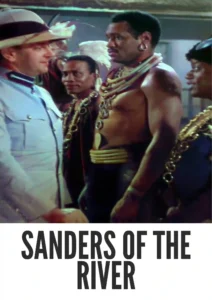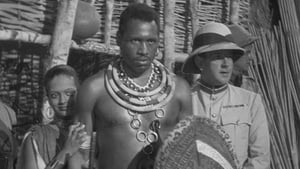Video Sources 0 Views

Synopsis
Adventure on the African River: Sanders of the River (1935) in Vivid Color

Embark on a colonial adventure with Sanders of the River, a 1935 film now beautifully colorized for a stunning viewing experience. Starring Paul Robeson and Leslie Banks, this film delivers a tale of British colonial administration in Africa, filled with action and cultural encounters. Perfect for classic film buffs interested in historical dramas, this HD download brings a controversial yet visually compelling piece of cinematic history to your screen.
Sanders of the River Storyline: Colonialism and Conflict
Sanders of the River follows Commissioner Sanders (Leslie Banks), a British colonial officer in Nigeria, as he navigates the challenges of maintaining order and justice among the local tribes. Sanders is depicted as a benevolent ruler who uses his authority to settle disputes, suppress rebellions, and promote trade.Paul Robeson stars as Bosambo, a native chief who is loyal to Sanders and aids him in his efforts to maintain peace. Bosambo’s allegiance is tested as he confronts those who resist British rule, leading to conflicts and dramatic showdowns. The film explores themes of colonialism, cultural interaction, and the complexities of power dynamics in a colonial setting. Despite its controversial portrayal of colonialism, Sanders of the River remains a significant historical artifact, offering insights into the attitudes and perceptions of its time.
Movie Cast
The film features a cast that brings this colonial-era story to life:
- Paul Robeson as Bosambo
- Leslie Banks as Commissioner Sanders
- Nina Mae McKinney as Lilongo
- Robert Cochran as Ferris
- Richard Gray as Hamilton
Movie Genre
Sanders of the River falls into the genre of colonial adventure, with elements of drama and action that reflect the attitudes and perceptions prevalent during its time. Its historical context and cultural depictions make it a compelling and controversial film.
Historical Context: Colonialism and British Cinema
Released in 1935, Sanders of the River reflects the prevailing attitudes toward colonialism in British society. The film was produced during a period when the British Empire was at its height, and its portrayal of British rule in Africa is both celebratory and paternalistic. While the film has been criticized for its racist stereotypes and biased perspective, it remains a significant historical artifact that provides insights into the values and assumptions of its time.
Colorization Details
This colorized version of Sanders of the River has been meticulously restored using modern digital techniques, enhancing the visual appeal while preserving the film’s original atmosphere. The colorization process involved carefully analyzing the grayscale tones of the original black and white footage and assigning appropriate colors to each scene. This painstaking process brings new life to the characters and settings, making the story even more engaging for modern audiences. While some may debate the merits of colorizing classic films, it introduces these films to a broader audience, ensuring their legacy for future generations.
Technical Details
- Director: Zoltán Korda
- Screenplay: Lajos Biró, Jeffrey Dell, Arthur Wimperis
- Based on: stories by Edgar Wallace
- Cinematography: Georges Périnal
- Edited by: William Hornbeck
- Production Company: London Film Productions
- Distributed by: United Artists
- Runtime: 98 minutes
Technical Specifications
- Download Format: MP4
- Resolution: HD (1080p)
- Compatibility: Compatible with most devices, including smartphones, tablets, computers, and smart TVs.
Reviews and Critical Reception
Sanders of the River (1935) has been the subject of much debate due to its controversial portrayal of colonialism and its depiction of race relations. While it was a commercial success at the time of its release, it has since been criticized for its racist stereotypes and biased perspective. Despite these criticisms, the film remains a significant historical artifact, offering insights into the attitudes and perceptions of its time.
FAQs
- Q: What is Sanders of the River about?
- A: Sanders of the River is a colonial adventure film about a British commissioner in Nigeria who works to maintain order among the local tribes.
- Q: Who stars in Sanders of the River?
- A: The film stars Paul Robeson as Bosambo and Leslie Banks as Commissioner Sanders.
- Q: Is this version of Sanders of the River colorized?
- A: Yes, this version has been professionally colorized to enhance the viewing experience.
- Q: What are some of the criticisms of Sanders of the River?
- A: The film has been criticized for its racist stereotypes and biased portrayal of colonialism.
- Q: What is the download format?
- A: The download format is MP4, which is compatible with most devices.
- Q: What resolution is the download?
- A: The resolution is HD (1080p), providing a high-quality viewing experience.
Download Now in HD!
Watch Sanders of the River Today!








